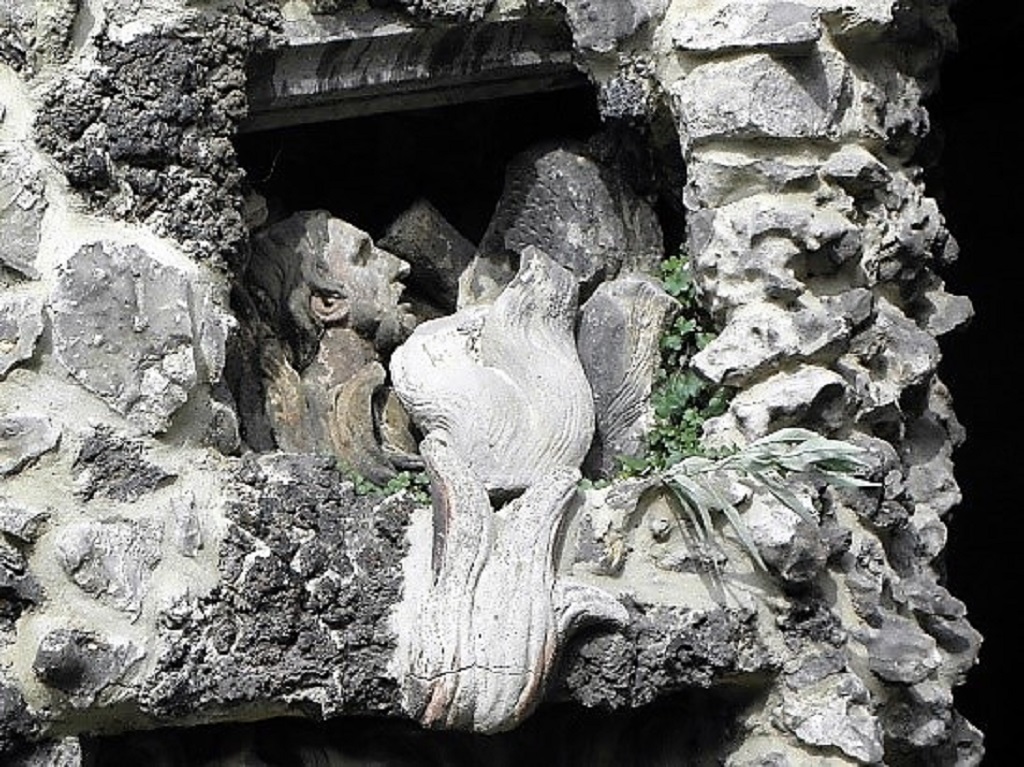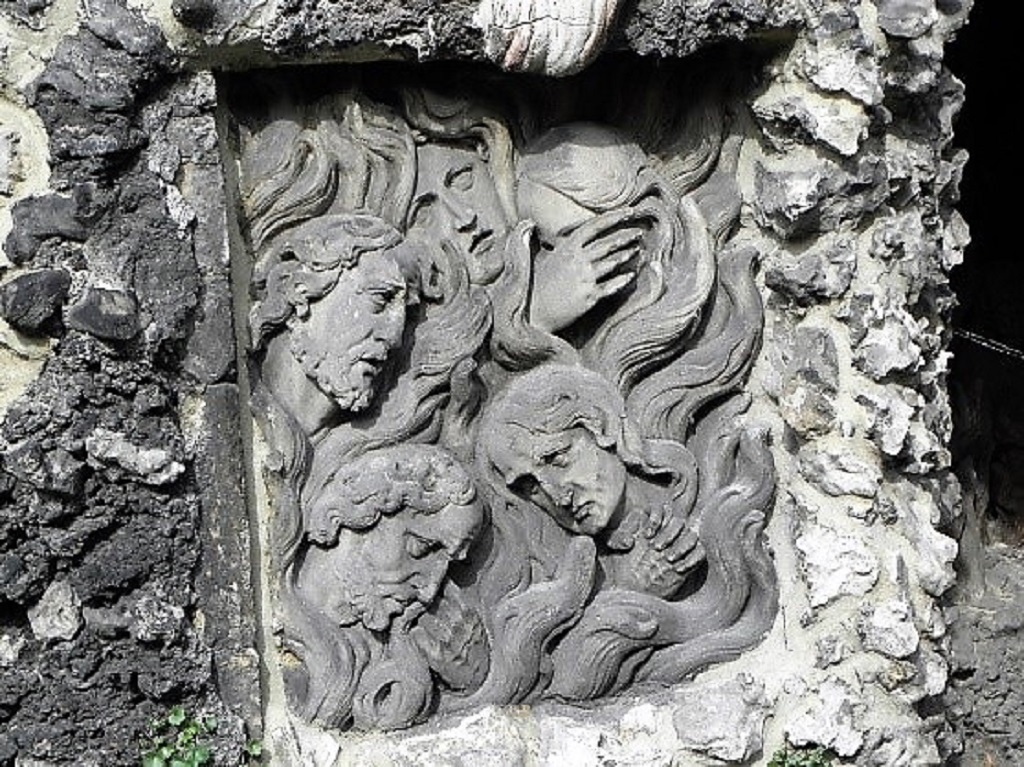Saint Paul’s, the Antwerp Dominican church, a revelation
The Calvary garden: on a pilgrimage 'round the corner'
Other figures
Worshippers of the Holy Land
At last there are a few figures who spent some time in the Holy Land to live their devotion for Christ more vividly.
In the garden on the left empress Helena (V1) is sitting, venerating the Holy Cross that has been found.
Further, close to the grave not by coincidence, Mary of Egypt (V2) is sitting in a cave. After a pilgrimage to the Holy Land she converted and she retreated to the desert as a repentant sinner. She can be recognized by her extraordinarily long hair.
In the one hand Pelagia (V5) has a stringed instrument, a music score and a theatre mask, as vanitas symbols, and in the other hand she is carrying a skull as a symbol of transitoriness.
The half-naked Church Father Jerome (V6), who in the desert near Bethlehem wrote the translation of the Bible that we know as the Vulgate, is accompanied by the lion, his attribute.
The devoted pilgrim Eustochium (V7) also stayed in the region of Jesus’ birth place.
Figures of the Old Testament
On the Eastern garden wall there are two distinguished Old TestamentPart of the Bible with texts from before the birth of Jesus. figures. Moses (Mo), who is now wearing sandals, is holding the two tables with the Ten Commandments and with his finger points at the text: “EGO SUM DOMINUS DEUS TUUS Ex. 20:2” (I am the Lord, your God). King David (Da), crowned and with a star on the head, praises God playing a harp.
In the corner of purgatory, at both sides of the Holy Grave, the inscription says: “Het is een heilig en zalig gedacht voor de overledenen te bidden opdat zij van de zonden ontbonden worden” [“It was a holy and pious thought. Thus he made atonement for the dead that they might be freed from this sin.” ] (2 Macc. 12:45-46)




